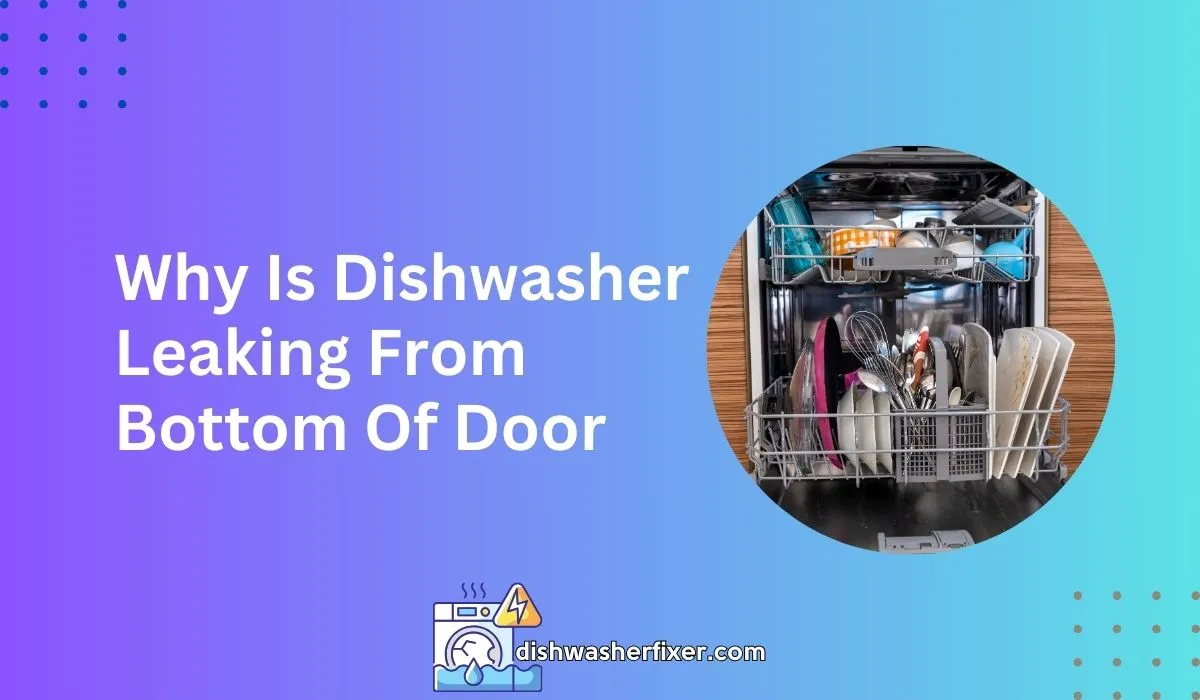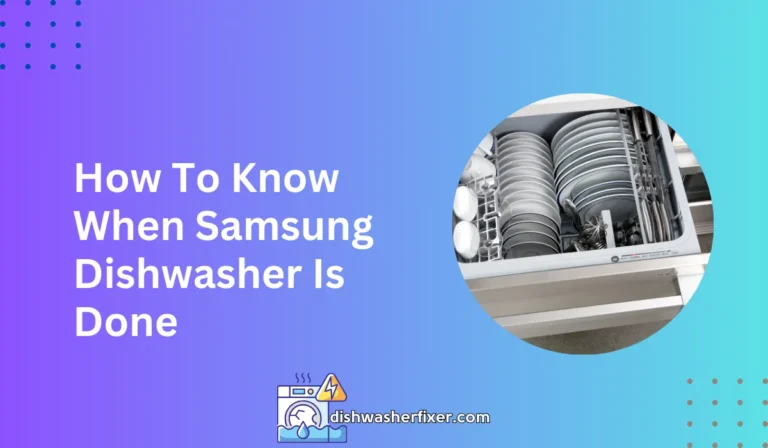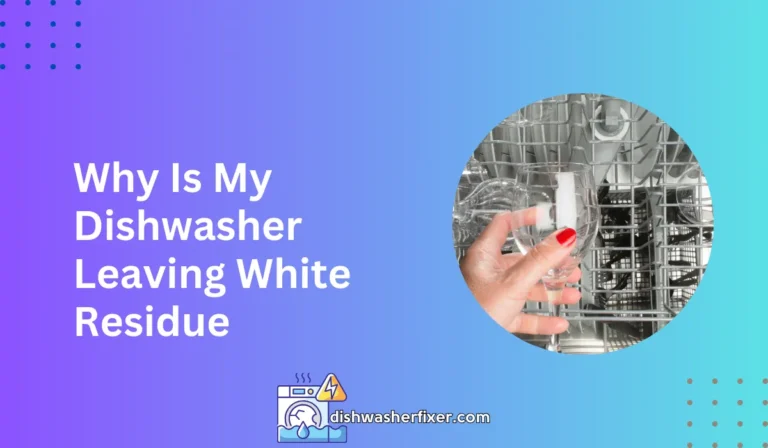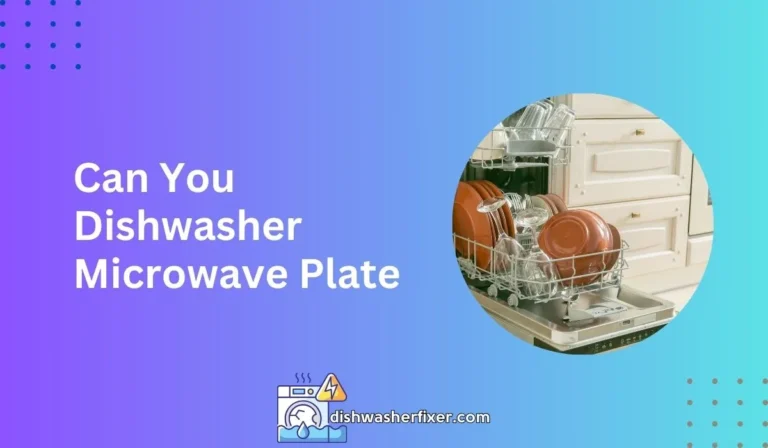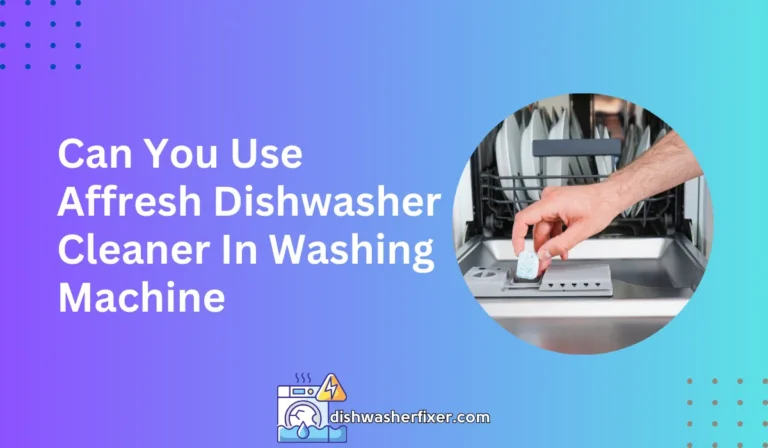Why Is Dishwasher Leaking from Bottom of Door? Quick Fixes!
A dishwasher leaking from the bottom of the door may be due to worn gaskets, misaligned door latch, or blocked drains causing overflow. Check the door seal and clear any debris in the drain area. Ensure the dishwasher is level to prevent misalignment and leaks.
Common Causes of Dishwasher Leaks from the Bottom of the Door
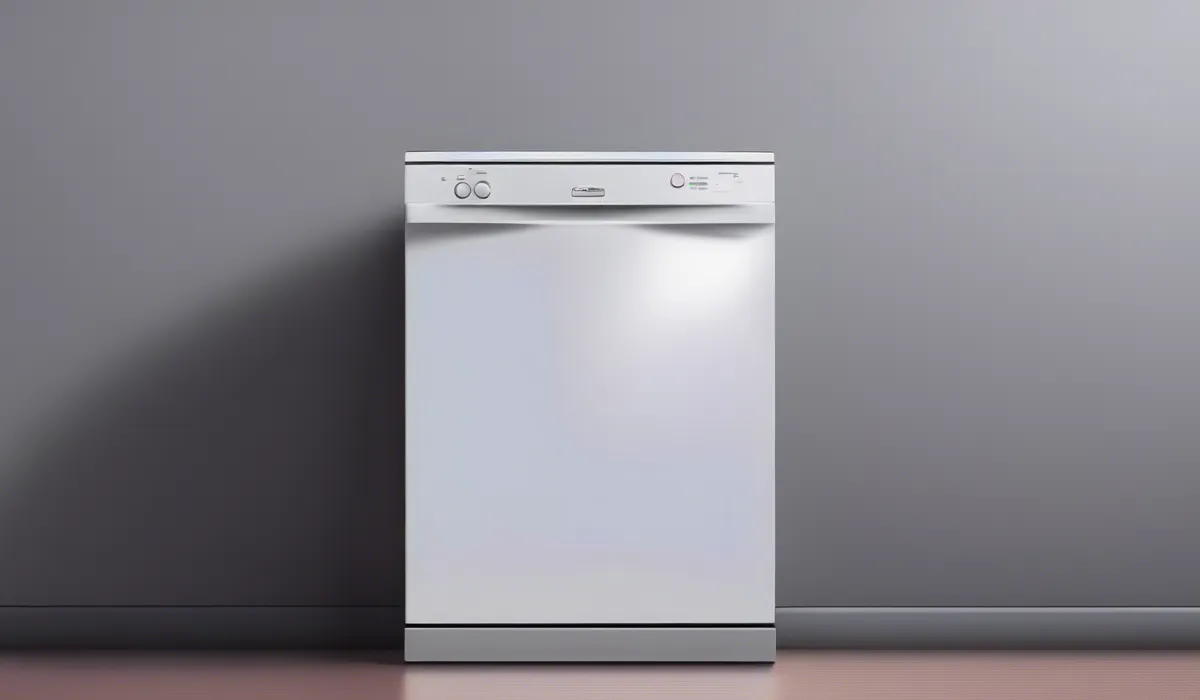
Worn or Damaged Door Gasket
A door gasket, also known as a door seal, is a crucial component designed to prevent water from leaking out of your dishwasher.
Over time, this rubber seal can become worn or damaged due to regular use, exposure to high temperatures, and detergent chemicals.
A compromised door gasket may have cracks, tears, or gaps that allow water to escape, especially during the intense spray cycle of a wash.
Misaligned Door Latch
The door latch ensures that your dishwasher door closes properly. If it becomes misaligned, perhaps due to rough handling or general wear, it can prevent the door from sealing correctly.
This misalignment can create small openings at the bottom of the door through which water can leak.
Loose or Damaged Door Hinges
Door hinges are essential for the smooth operation of your dishwasher door. If they become loose or damaged, they can cause the door to hang unevenly.
This unevenness can, in turn, lead to improper sealing at the bottom of the door, allowing water to leak out during a wash cycle.
Oversudsing from Incorrect Detergent Usage
Using the wrong type of detergent, or too much of it, can create excessive suds inside your dishwasher. These suds can overflow, causing leaks at the bottom of the door. High-efficiency dishwashers, in particular, require specific detergents designed to produce fewer suds.
High Water Level Due to Malfunctioning Float Switch
Your dishwasher’s float switch regulates the water level inside the appliance. If this switch malfunctions, it could fail to signal the dishwasher to stop filling, resulting in a higher than normal water level. This overflow can lead to water escaping from the bottom of the door.
Troubleshooting and Diagnosing the Leak
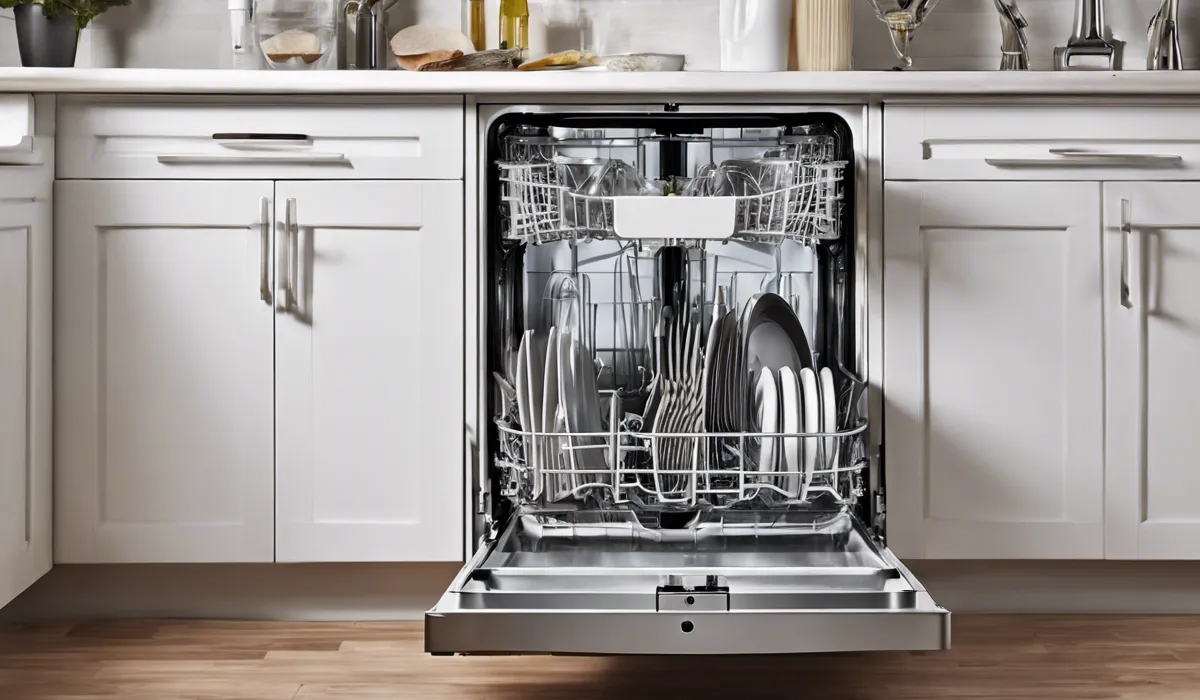
Inspecting the Door Gasket for Wear and Tear
Begin your troubleshooting by carefully inspecting the door gasket. Look for any signs of degradation or damage. Gently run your fingers along the seal to feel for inconsistencies or areas where it may not be adhering properly to the door frame.
Checking the Alignment of the Door and Latch
Examine the alignment of the door when it’s closed. Ensure that the door latch clicks into place and that there are no gaps between the door and the appliance’s body. Misalignment can often be corrected with simple adjustments.
Examining the Door Hinges for Looseness or Damage
Inspect the door hinges to identify any looseness or damage. Check if the door is hanging properly and not tilted to one side. A door that does not sit flush with the frame can be a direct cause of leaks.
Assessing Detergent Type and Amount to Prevent Oversudsing
Review the type of detergent you are using and measure the amount per the manufacturer’s instructions. Switching to a high-efficiency detergent or reducing the amount used can often resolve issues related to oversudsing.
Evaluating the Float Switch and Water Level in the Dishwasher
Check the float switch, usually located at the bottom of the dishwasher, to ensure it moves freely and isn’t obstructed by debris. If the float switch is stuck, it may cause the dishwasher to overfill and leak.
Repair and Prevention Strategies
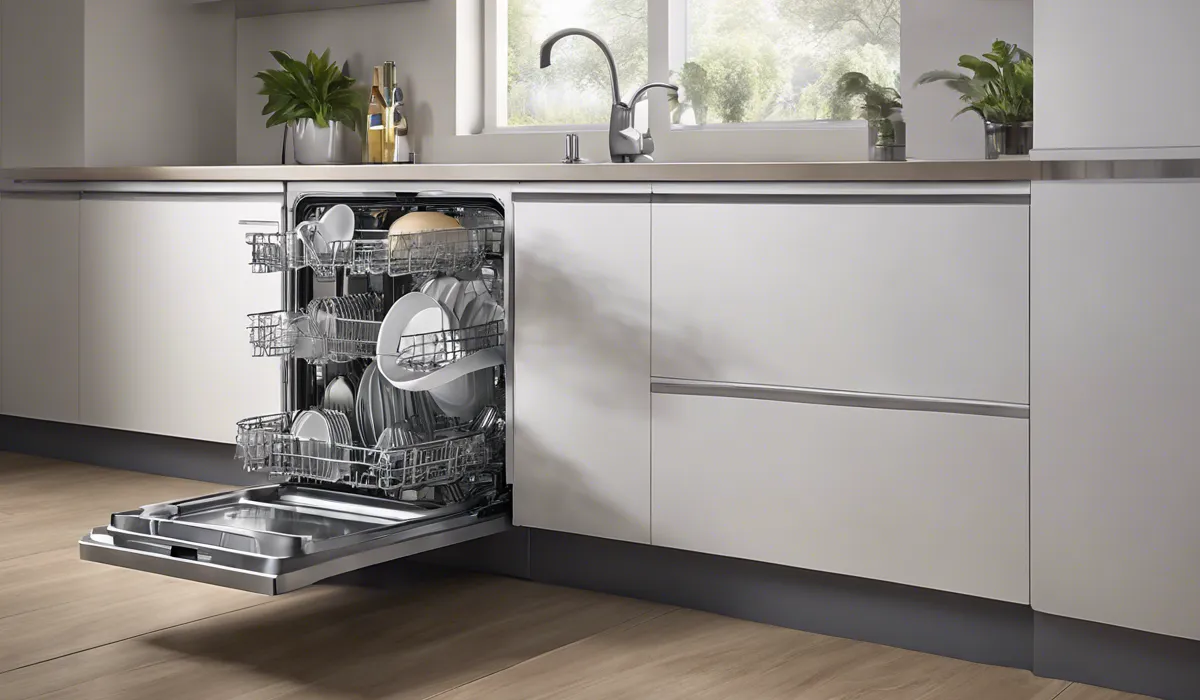
Replacing the Door Gasket
If your inspection reveals a damaged door gasket, replacing it is often a straightforward process. Make sure to purchase the correct seal for your model and follow the manufacturer’s instructions for installation.
Adjusting or Replacing the Door Latch
If the door latch is misaligned, try adjusting it according to the user manual. Should the latch be damaged, it will likely need to be replaced to ensure a proper seal.
Tightening or Replacing Door Hinges
Loose hinges can usually be tightened with a screwdriver. However, if the hinges are damaged, they will need to be replaced. Ensure you use compatible hinges for your dishwasher model.
Using the Correct Detergent and Measuring Properly
Always use detergents recommended by the dishwasher manufacturer and measure the correct amount for each wash cycle to prevent oversudsing and potential leaks.
Repairing or Replacing the Float Switch
If the float switch is defective, it may require cleaning or replacement. Consult your dishwasher’s manual for guidance on how to access and service the float switch.
Regular Maintenance Tips to Prevent Future Leaks
Maintaining your dishwasher can prevent future leaks. This includes regular cleaning of the filter and drain area, ensuring the appliance is level, and inspecting the door seal and hinges periodically for signs of wear.
FAQs About Dishwasher Leaking from Bottom of Door
Why is my dishwasher leaking from the bottom of the door?
A dishwasher may leak from the bottom of the door due to worn-out gaskets, a misaligned door latch, or a blocked drain causing water to overflow.
How can I fix a dishwasher leaking from the bottom of the door?
To fix a leak, inspect and replace any worn door gaskets, ensure the door latch is properly aligned, and remove any debris from the drain area.
Can a misaligned dishwasher door cause leaks?
Yes, a door that is not properly aligned can lead to leaks at the bottom of the door due to an inadequate seal.
What should I check if my dishwasher’s bottom door is leaking?
Check the condition of the door seal, the alignment of the door, and the cleanliness of the drain area for any obstructions or debris.
Does an unlevel dishwasher cause leaks from the door?
Yes, an unlevel dishwasher can cause door misalignment, which can result in leaks from the bottom of the door.
Final Thoughts
A dishwasher leaking from the bottom of the door typically results from issues such as worn-out gaskets, a misaligned door latch, or blockages in the drain causing overflow.
To address this, inspect and replace the door seal if necessary, clear any obstructions in the drain, and ensure the appliance is properly leveled to avert potential misalignment and consequent leaks.
